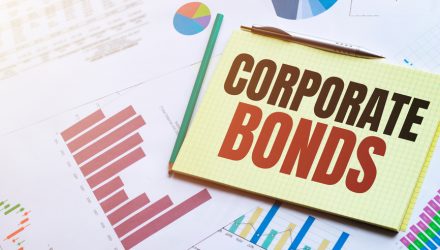As the Federal Reserve poured funds into the bond markets, particularly exchange-traded funds (ETFs) and individual bonds, it was corporate bonds that were the major beneficiary during the second quarter.
A one-two combination of tighter credit spreads and the central bank keeping rates low allowed companies to refinance current debt at lower rates or take on more debt.
“The combination of tightening credit spreads and falling interest rates led to an admirable performance across the fixed-income sector during the second quarter,” wrote Dave Sekera in a Morningstar article. “The Morningstar US Core Bond Index (our broadest measure of the fixed-income universe) rose 2.82%. The increase was largely driven by a significant tightening of credit spreads in the corporate bond market.”
“The standout returns this quarter were generated in the corporate bond sector as credit spreads tightened significantly, recouping much of the widening that occurred during the market rout in the first quarter,” Sekera noted further. “Near the end of the first quarter, we highlighted that corporate credit spreads had widened to what we viewed as attractive levels for long-term investors. For investors able to withstand additional market volatility, we suggested that it was an opportune time to rebalance fixed-income portfolios and to layer in additional corporate credit fund exposure.”
An Active, Investment-Grade ETF Option in Corporate Bonds
If high yield is too much risk to bear, investors can opt for an investment-grade option like the Principal Investment Grade Corporate Active ETF (IG). IG seeks to provide current income and, as a secondary objective, capital appreciation.
Additionally, the fund is an actively managed ETF that seeks to achieve its investment objective by investing, under normal circumstances, at least 80% of its net assets, plus any borrowings for investment purposes, in investment grade corporate bonds and other fixed income securities at the time of purchase. “Investment grade” securities are rated BBB- or higher by S&P Global Ratings or Baa3 or higher by Moody’s Investors Service, Inc. or, if unrated, of comparable quality in the opinion of those selecting such investments.
Key features of IG:
- Active management: Combines bottom-up independent credit research with top-down strategy, seeking alpha through credit selection, industry rotation, and curve positioning
- A straight forward process: Investment grade exposure, free of derivatives, unrated issues, and large duration bets
- A strategic perspective: Forward looking, the iterative process seeks credits exhibiting stable-to-improving credit rating trajectory which may benefit from spread compression and income premiums
For more market trends, visit ETF Trends.

